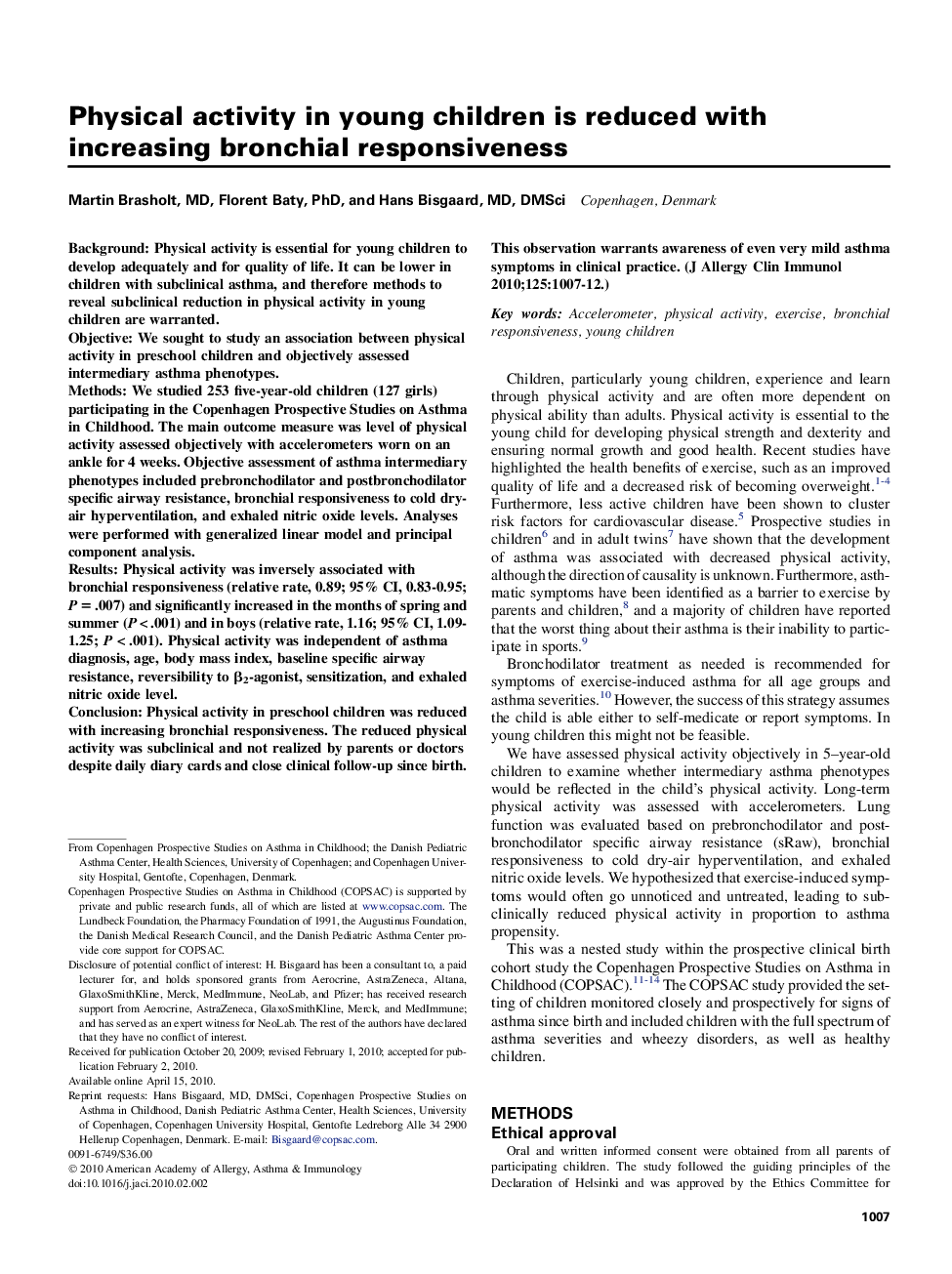| Article ID | Journal | Published Year | Pages | File Type |
|---|---|---|---|---|
| 3200806 | Journal of Allergy and Clinical Immunology | 2010 | 6 Pages |
BackgroundPhysical activity is essential for young children to develop adequately and for quality of life. It can be lower in children with subclinical asthma, and therefore methods to reveal subclinical reduction in physical activity in young children are warranted.ObjectiveWe sought to study an association between physical activity in preschool children and objectively assessed intermediary asthma phenotypes.MethodsWe studied 253 five-year-old children (127 girls) participating in the Copenhagen Prospective Studies on Asthma in Childhood. The main outcome measure was level of physical activity assessed objectively with accelerometers worn on an ankle for 4 weeks. Objective assessment of asthma intermediary phenotypes included prebronchodilator and postbronchodilator specific airway resistance, bronchial responsiveness to cold dry-air hyperventilation, and exhaled nitric oxide levels. Analyses were performed with generalized linear model and principal component analysis.ResultsPhysical activity was inversely associated with bronchial responsiveness (relative rate, 0.89; 95% CI, 0.83-0.95; P = .007) and significantly increased in the months of spring and summer (P < .001) and in boys (relative rate, 1.16; 95% CI, 1.09-1.25; P < .001). Physical activity was independent of asthma diagnosis, age, body mass index, baseline specific airway resistance, reversibility to β2-agonist, sensitization, and exhaled nitric oxide level.ConclusionPhysical activity in preschool children was reduced with increasing bronchial responsiveness. The reduced physical activity was subclinical and not realized by parents or doctors despite daily diary cards and close clinical follow-up since birth. This observation warrants awareness of even very mild asthma symptoms in clinical practice.
